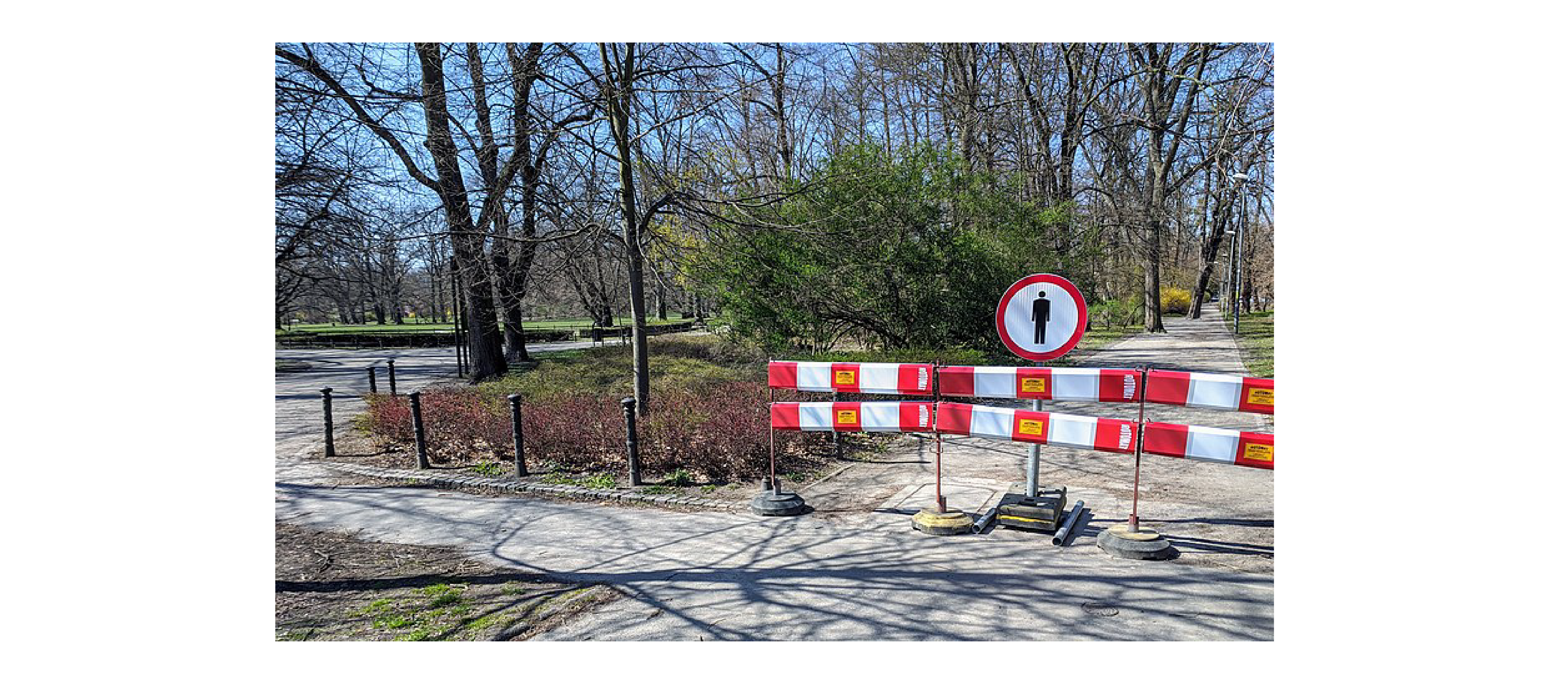
COVID-19 vs. access to urban green space
Image Source: Julo
In the previous post on “Urban forests & green space during Covid-19 pandemic”, the authors presented selected measures enforcing social distancing in urban green spaces or on the way to such spaces.
Perhaps most commonly in different countries, due to the COVID-19 pandemic, access to public spaces, including urban green spaces (UGS), such as parks and forests, has been restricted.
Even before formal access restrictions were enacted, local policy- and decision-makers appealed to residents for limiting the use of public spaces, including UGS, playgrounds, outdoor gyms, and sports fields. For example, this is what happened in one of the CLEARING HOUSE case study cities – Krakow in Poland – where the Urban Green Space Authority informed about the risks associated with the use of public green spaces during the pandemic on special boards. This is particularly noteworthy because otherwise Krakow has allocated substantial funds and time in recent years to create new UGS, renovate existing infrastructure, create flower meadows and conducted many projects and programs aimed at increasing the area and quality of green spaces in the city.
UGS access restrictions affected millions of people in different countries and made them aware of the importance of spending their free time in green spaces for relaxation and for good psychological and physical well-being, which is so often taken for granted. However, note that many people do not have access to UGS or struggle with limited access on a daily basis. For this reason, UGS accessibility is subject to an important field of research, linking to the issues of environmental and social justice. Interestingly, it is not just UGS accessibility that may be different for different people but also two other aspects of UGS provision. At the most basic level, the mere availability or existence of UGS near the place of living counts the most. Regardless of whether UGS are physically or psychologically accessible, they can provide many benefits to nearby inhabitants if – quite simply – they are there, where needed. Ultimately, and this is the third level, following availability and accessibility, we need to consider UGS attractiveness, which indicates whether potential users want to use a given UGS.
Recent access restrictions have highlighted potential problems with accessibility, but UGS provision can be limited by different barriers at all levels, including by new investments or insufficient legal protection at the level of availability, and lack of park infrastructure and recreational equipment or noise at the level of attractiveness (Biernacka and Kronenberg, 2018). As highlighted in our recent research, only by putting all three levels together can we discuss the actual supply of UGS that will provide various ecosystem services, and whether their current distribution coincides with the needs and preferences of different groups of urban residents (see references below). The relevant indicators referring to these three levels should form the basis of standards for providing UGS to city residents.
Hopefully, the current pandemic and the restrictions it entails will make both city residents and decision makers more aware of the importance of free and unlimited use of UGS, and their equal access for all, which will translate into increase of the perceived importance of UGS and better planning and management decisions in the near future.
References and further reading:
Biernacka, M., Kronenberg, J., 2018. Classification of institutional barriers affecting the availability, accessibility and attractiveness of urban green spaces. Urban Forestry & Urban Greening 36, 22–33.
https://doi.org/10.1016/j.ufug.2018.09.007
Biernacka, M., Kronenberg, J., Łaszkiewicz, E., 2020. An integrated system of monitoring the availability, accessibility and attractiveness of urban parks and green squares. Applied Geography 116, 102152. https://doi.org/10.1016/j.apgeog.2020.102152
Authors: Magdalena Biernacka and Jakub Kronenberg, Social-Ecological Systems Analysis Lab at University of Lodz, Poland
Research carried out in the Social-Ecological Systems Analysis Lab at University of Lodz focuses on the distribution of urban green and blue infrastructure within a city from the perspective of environmental justice, on the perception and value of green and blue infrastructure for urban inhabitants, and on the relevant governance settings. Within CLEARING HOUSE we work primarily on the social perceptions of urban forests and on governance settings.
